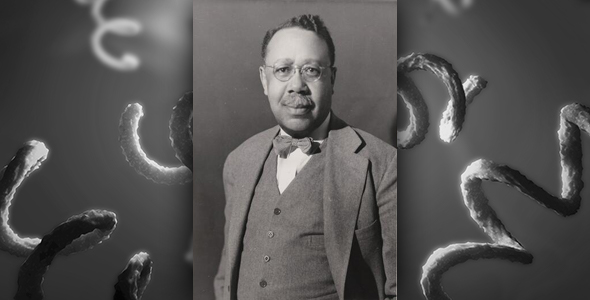By the bioMérieux Connection Editors
William Augustus Hinton was a groundbreaking bacteriologist who was best known for developing blood tests to detect syphilis. Syphilis is a bacterial infection that, after being present for many years without treatment, can cause widespread organ damage and death. During his career, Hinton became the first Black person to write a medical textbook in the U.S.— Syphilis and its Treatment, published in 1936.He was also the first African American to be promoted to professor at Harvard University.
Early Life
Hinton was born in Chicago in December 1883 to freed slaves. Both of his parents farmed, and his father also worked as a railway porter. In 1905, after graduating high school and attending the University of Kansas for a couple years, Hinton earned a baccalaureate degree in science from Harvard College. He spent his time after college teaching at numerous universities throughout Illinois, Tennessee, and Oklahoma while furthering his study of physiology and bacteriology. Hinton matriculated at Harvard Medical School in 1909. He graduated with honors in 1912.
Contributions to Medical Research & Diagnostics
Dr. Hinton was impacted by racial prejudice throughout his career as a medical doctor. Upon graduation, he sought a position in surgery but was barred from hospitals in the Boston area. He instead took a position teaching serologic techniques at the Wassermann Laboratory. While in this position, he became familiar with serologic methods for laboratory diagnosis of syphilis. He performed autopsies on those who passed away from suspected syphilis and conducted research. The assay that Hinton soon developed to test for the disease had a high specificity and was novel for its time.
Eventually, Hinton served as assistant director of the Massachusetts Division of Biologic Laboratories and as the chief of the Wasserman Laboratory, which was a part of the Massachusetts Department of Public Health. He served in these positions for 38 years. Today, the Massachusetts state laboratory building is named in honor of Hinton—the William A. Hinton State Laboratory Institute.
Teaching at Harvard
In 1918, Dr. Hinton began teaching at Harvard Medical School as an instructor in preventive medicine and hygiene. He was appointed to instructor in bacteriology and immunology in 1946. One year before his retirement, in 1949, Hinton was promoted to clinical professor in bacteriology and immunology.
60 years after his death, Dr. Hinton and his accomplishments were acknowledged with a formal unveiling of his portrait in Gordon Hall’s Waterhouse Room at Harvard University. The Hinton painting was requested by the Harvard Foundation for Intercultural and Race Relations, in an effort to bring more diversity to University artwork.
“Professor Hinton was indeed a pioneer. A brilliant thinker, experimentalist and a force for good in the service of humankind,” said the Dean of Harvard Medical School, George Q. Daley during the unveiling ceremony that took place on September 10, 2019. “He changed the world and made Harvard Medical School a better place in the process.”
Opinions expressed in this article are not necessarily those of bioMérieux, Inc.
Header Image:
“William Augustus Hinton,” OnView: Digital Collections & Exhibits, accessed February 18, 2021, https://collections.countway.harvard.edu/onview/items/show/18162.



